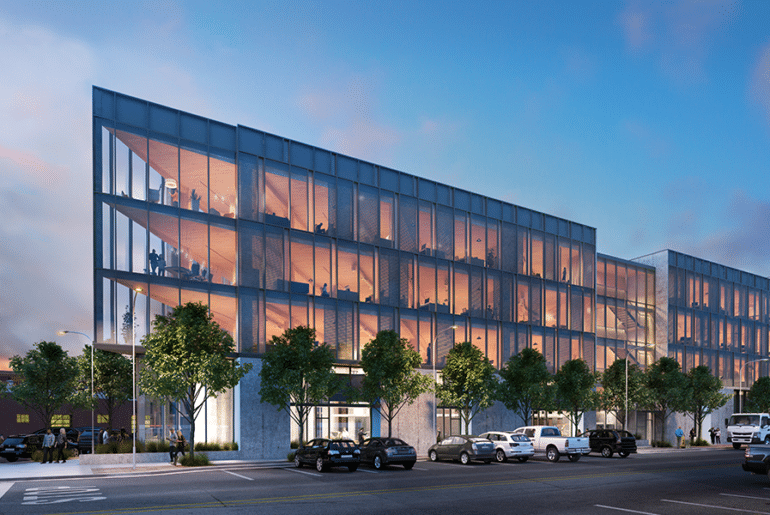A version of this article was originally published in GRESB Partner Insights.
As more companies realize the need to decarbonize their real estate portfolios in the face of increasing climate risk and rising investor expectations, guidance on how to transition to Net Zero Carbon (NZC) on the portfolio level is crucial. While most owners and developers are familiar with the typical Owner’s Project Requirements (OPR) to deliver on individual project goals, development teams will need to start by creating a portfolio-level OPR and expand its lens beyond basic OPR strategies to specifically focus on NZC, to decarbonize at scale.
This document, as a portfolio-wide guideline, should provide a NZC framework to guide the company in creating project-specific OPRs that meet the NZC needs for all future new development projects. Each individual project’s team may also use the OPR as a single-source reference for the company’s portfolio-wide NZC strategies and methodologies during the pre-design and design phase.
WHY CREATE A PORTFOLIO-LEVEL NET ZERO CARBON OPR?
Before development teams decide to dive into what can seem like a daunting exercise, let’s lay out the advantages of this approach. So, why create a portfolio-wide NZC OPR? The answer is two-fold:
-
- Portfolio-wide consistency: A portfolio-level requirement is a top-down approach that helps set up the overall policy and requirements for NZC in each individual project. This guiding document is critical for clarity and consistency across all projects in a company’s portfolio.
- Net Zero Carbon specific: A NZC OPR goes beyond the typical components of an OPR and adds sections that specifically detail NZC strategies. This provides the owner or developer with clear guidance on how to reach NZC on each individual project across their portfolio.
WHAT’S INCLUDED IN A PORTFOLIO-LEVEL NET ZERO CARBON OPR?
Choosing the best NZC strategies for a company’s portfolio will always depend on its specific goals and resources. That said, there are many NZC strategies that are worth considering when creating a NZC OPR. A few of these key strategies are outlined below.
#1: Integrated Design Charrette
An integrated design charrette allows stakeholders like the investment team, property management, and building occupants to share their perspectives and ideas about the project at a time when their feedback can still be easily and inexpensively incorporated into the design. Hosted by the project team during the conceptual design or schematic design phase, the main goal of this one-time charrette is to establish absolute energy outcome targets, outline a plan to achieve them, and explore design strategies that are most appropriate to achieve the project’s other decarbonization design goals.
The outcomes of an integrated design charrette include:
-
- The owner, design team, and all stakeholders understand and are committed to the project vision and goals and have a better understanding of how to work with each other.
- Zero Net Energy (ZNE) EUI energy targets are clarified and set.
- Funding, financing, and incentive options for the project are identified and discussed.
- Investment team understands the importance of their ongoing role in a successful ZNE building once handed over.
- All team members understand that post-construction measurement and verification of performance involves commitment by all involved with the project.
Next steps are outlined for engaging additional stakeholders.
Following the initial design charrette, when the project strategies for exploration have been identified, the AEC team or selected steering committee can facilitate follow-up focus group meetings regarding each individual strategy to provide opportunities for discussion of more specific alternatives and to ensure the team continues to work toward the NZC goal.
#2: Decarbonization Strategies
Some common decarbonization strategies include:
-
- Passive Strategies: Optimize building performance through the evaluation of site climate, building form, orientation, shading, and ventilation that are taken during the early design phase. The intent is to reduce cooling requirements during the summer and heating requirements in the winter through appropriate orientation, external and internal shading devices, appropriate amount and kind of glazing, and natural ventilation while maintaining occupant thermal comfort.
- Building Envelope: Ensure an air-tight, highly insulated building envelope that encompasses building foundation, exterior walls, roof surface, and sun control and shading devices.
- Active System Strategies: Consider mechanical systems, refrigerant management, lighting, receptable load, the power service and distribution system, the plumbing system, irrigation, and landscaping.
- Electrification: Consider replacing fossil fuel-based systems for space heating and service water heating, as well as cooking and laundry when applicable to go all-electric. Teams should identify opportunities for leveraging local electrification and energy efficiency incentives and subsidies during the early design phase.
- Onsite Renewables: After incorporating efficiency measures and prior to investigating off-site renewable sourcing possibilities, explore options to provide renewable energy from onsite sources, which is often done through a ZNE feasibility analysis.
- Sustainability Engineering: Use sustainability engineering and building analytical simulation to help identify climate-responsive design strategies at the early design phase, evaluate individual and cumulative impacts of discreet design options, keep track of projected Energy Use Intensity (EUI) and targeted energy savings towards green building certifications, and inform the design process and decision-making with stakeholders.
- Commissioning: Use commissioning to establish the building operating conditions and parameters, drive quality assurance, and ensure the design and construction meet the project and owner’s needs. Commissioning should typically cover HVAC systems, domestic hot water systems, indoor lighting controls, landscape Irrigation systems, renewable energy systems, security systems, access control systems, water reuse systems, emergency and standby generators and associated fuel oil systems, power metering and monitoring systems, and the building envelope, among other project-dependent relevant systems and controls.
- Controls & Sub-Metering: Employ a robust energy management system to ensure facility energy is used with maximum efficiency. Teams should consider advanced energy metering to support energy management and identify opportunities for additional energy savings by tracking building-level and system-level energy use.
- Measurement & Verification: Develop a measurement and verification (M&V) plan to ensure real-time data is collected to measure each building’s ZNE performance once in operations.
- Owner Training: Have the facility operations and maintenance contractors meet with the design team and commissioning agent to learn about the building systems, controls, and automation systems before taking over maintenance responsibilities. Doing so will educate building maintenance staff to ensure all energy efficiency designs are being executed as intended for future building operations.
- Material Selection: Evaluate building and interior materials for embodied carbon emissions, then employ embodied carbon reduction strategies—typically a material quantity reduction, a material alternative, or a product alternative.
#3: Carbon Credits
Sometimes, implementing all feasible carbon reduction strategies still won’t guarantee a NZC development. In this case, carbon credits can be purchased to offset the remaining annual emissions from the specific development. This Carbon Offsets Guide provides a light framework for selecting the most aligned carbon offsets options for a company.
WHAT ABOUT EXISTING ASSETS?
While the NZC OPR approach outlined here is focused on new construction, another step owners and developers can take is to use a similar methodology to create a NZC Current Facility Requirements (CFR) for their existing assets. With both a NZC OPR and CFR, companies are fully equipped to transition their portfolios to zero by delivering NZC projects at scale to meet their corporate climate goals and maximize ESG impact.
Want to discuss how to transition your real estate portfolio to Net Zero Carbon? Reach out to our team.


